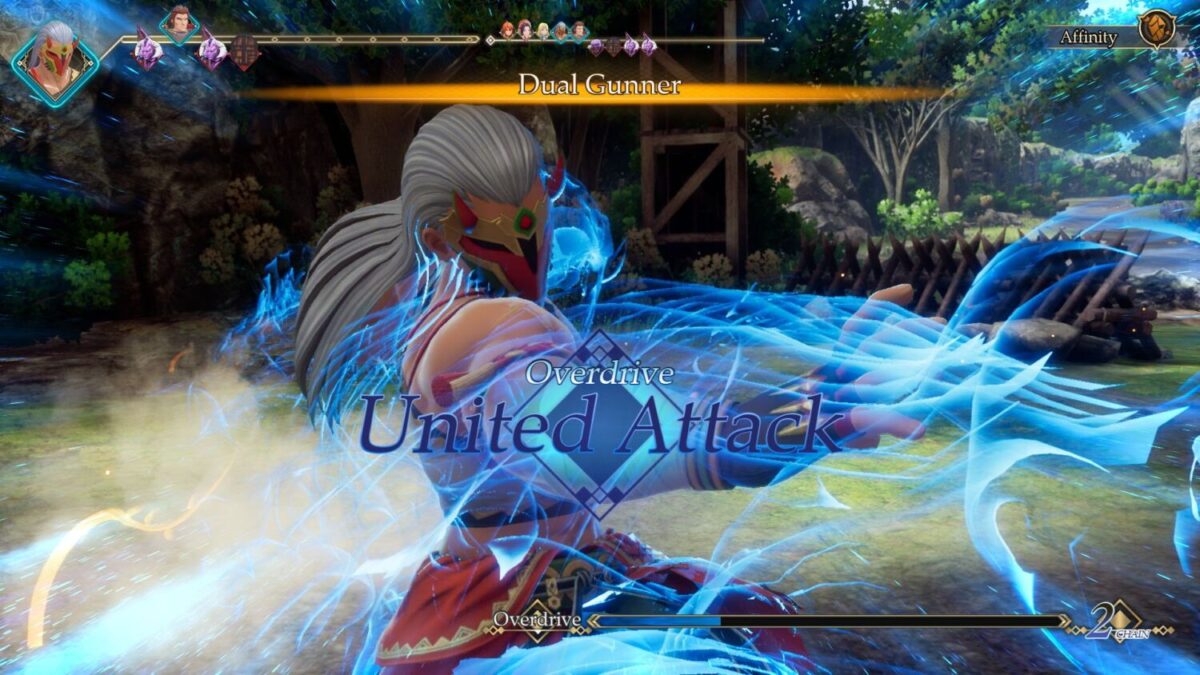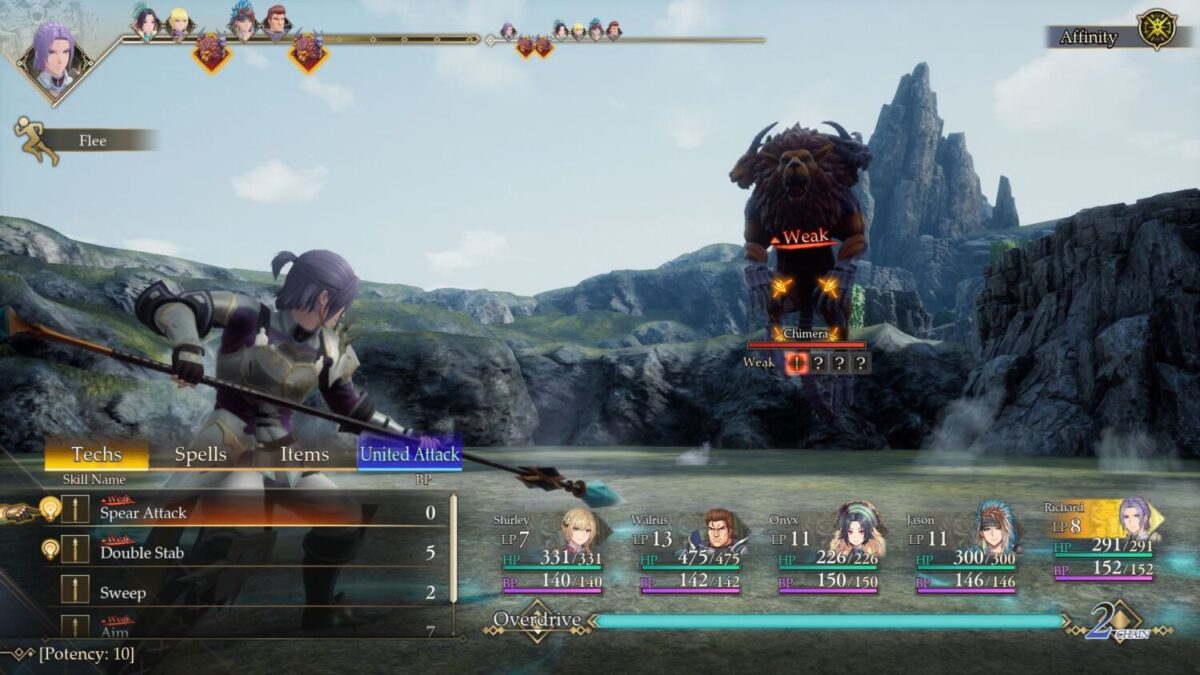Amidst a barrage of turn-based role-playing games like Dragon Quest IV and Final Fantasy V in 1992, Square Enix’s Romancing SaGa (1992) set itself apart from the crowd by introducing unique non-linear progression systems and weaving group formations into its battle system. The fourth entry in the now massive SaGa (サガ) science fantasy role-playing video game franchise might not be as well known, but its 1993 sequel, Romancing SaGa 2, expanded upon the strengths of its predecessor, adding the now iconic inheritance mechanic. More than three decades later, 3D remake Romancing SaGa 2: Revenge of the Seven attempts to breathe new life into the classic title with a complete visual overhaul and much-welcomed gameplay additions.

Romancing SaGa 2: Revenge of the Seven serves as a complete remake of the 1993 original, faithfully bringing characters, locations, and cutscenes into 3D, ensuring that familiar elements continue to stay true to the original while sporting a shiny new coat of paint. Producer Shinichi Tatsuke, who spoke with Geek Culture during a preview event on the sidelines of Tokyo Game Show 2024, certainly went into this project knowing the importance of balancing the new and the beloved.
“[The team] knew that simply transitioning the game to 3D as is would inadvertently create elements that felt off for players, hence we had to make several adjustments,” he explained.
“For example, in the cut scenes of the original release, we would have the pixelated characters speak through thought bubbles, but this would draw out the scenes in a modern 3D title, and feel too simplified.” Tatsuke continued, stating that the team had to fill in the gaps by presenting more than just plain text, including additional character animations and full-length dialogs.

Visuals are not the only thing to be revitalised with the remake, as it also brings along various gameplay additions introduced in previous titles in the series. Besides the iconic formation system, Glimmers also return, adding a layer of variety to combat. With this feature appearing during combat, characters can earn new weapon skills by performing certain attacks indicated by a lightbulb icon. Once glimmered (or unlocked), these skills are permanently learned by the character and can be used alongside the associated weapon.

The game will also include a new combat feature – United Attacks. These powerful team-based skills are charged during combat and once unleashed, combine two alternating character’s attacks into one overcharged strike, dealing massive damage. With all the different mechanics in play here, it may seem rather overwhelming for players, especially those new to the series and Tatsuke and the team were fully aware of this fact, and took the necessary steps to ease players into the title, where the original, Romancing SaGa 2 served as the best-selling of the three Romancing SaGa titles, with 1.5 million copies sold in Japan.

“We made sure that players didn’t have to learn all the mechanics at once, instead having a system that walks players through step by step,” Tatsuke explains, pointing out that the game will start slow and gradually build up its systems by adding various mechanics.
“At the beginning of the game, you start combat encounters with just two characters [instead of the full five]. We thought that giving players access to the full party right from the start would be a bit too much, and won’t help them to better understand the mechanics and combat.”

Accessibility does seem to be the team’s top priority when remaking the title, having noted that the original 1993 classic, although an excellent game, was not particularly user-friendly. The game was notorious for being extremely challenging and for not providing players with information on how to tackle various obstacles. This, according to Tatsuke, was a major focus when bringing the game to a modern generation.
“When we first started developing the game, we felt there were two different elements regarding difficulty. One was being difficult in a good way, providing challenging battles for players to overcome, and the other was the difficulty, that the game wasn’t friendly for players.” Tatsuke notes. The team had to then find ways to address the issues, bringing up the example of the lack of information provided on-screen.

“In the original installment, every enemy had its weakness, but they weren’t always disclosed or visible to players, Glimmers also faced the same issue. What players had to do back then was ask their friends or look at walkthroughs. Hence when we approached the remake, we decided to address these issues to make the game easier to understand and more user-friendly.”
Following the same goal of accessibility, the game now also features difficulty selections, ranging from Casual, Normal, and Classic (Hard). As seen by the naming convention, the original had a default difficulty setting which was considered particularly challenging by many, and as such including easier options was always in the cards for the development team.

“Yes, there was a lot of old fans who recognise the difficulty as part of the appeal of the game. So we definitely wanted to retain the challenging element of combat, Tatsuke explains.
“That being said, we do want to appeal to a much wider audience, and we don’t want players to feel that combat is too difficult, hence we added the difficulty option for the remake.”
Amidst all its new bells and whistles, Romancing SaGa 2: Revenge of the Seven still retains its unique gameplay mechanic that has withstood the test of time – the inheritance system. This feature was not only game-changing when it was introduced with the 1993 original (and is widely considered the main reason for the title’s success), but it still holds up to this day as something no other game has managed to recreate.

Playing as the ruler of the Empire of Varennes, players will step into the shoes of multiple protagonists throughout generations in the quest to defeat the Seven Heroes. As Tatsuke describes, “the antagonists are just too strong, so it would be impossible for a single protagonist to defeat all seven. So you fight as one character, and pass on your skills to your successor and the process repeats until you finally defeat them all.”
Playing as an entire generation of heroes certainly sounds intriguing, and with the remake’s new growth system, which allows players to pass on the knowledge and abilities to each successor through ‘inheritance magic’, it seems the game will give players plenty of freedom when it comes to choosing each main character.

This same freedom is shown during the story itself, with various narrative choices given that may affect the course of the player’s journey. In an example encountered during the preview, a choice was presented allowing the player to either tackle a goblin hideout or skip it and head straight for a challenging mini-boss. Although this was a rather inconsequential decision, it does set the tone for more major decisions down the line.
It is clear from the get-go that a lot of passion was put into making this remake. With such a unique inheritance gameplay system, as well as the title having no narrative connection to the first game in the series, Romancing SaGa 2 seemed like the obvious choice when it came to choosing which game in the series would receive the remake treatment and be reintroduced to a new era of gamers.

The team could have easily gone with a simple graphical overhaul. Still, they went a step further, not only modernising the look and feel of the game but also adding features seen throughout the series and adding options to make the game appeal to more people, making Romancing SaGa 2: Revenge of the Seven a title that’s shaping up to be a celebration of what made the series great and a perfect starting point for newcomers to boot.
Romancing SaGa 2: Revenge of the Seven releases on 24 October 2024 for the PlayStation 4/5, Nintendo Switch, and Windows PC via Steam.













